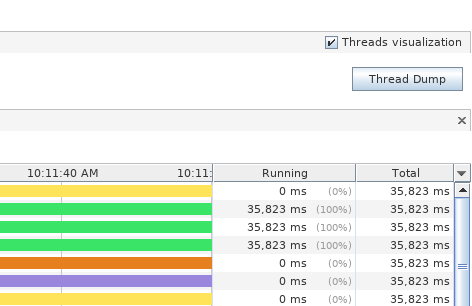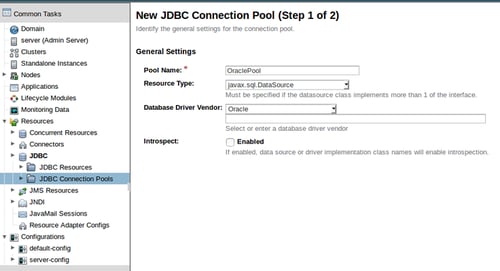Posts tagged How-to (4)
Fundamentos de Payara Server Parte 4 - Balanceo de Carga a través de Instancias de Payara Server con Servidor Web Apache
Published on 20 Jul 2017
by Michael Ranaldo
Topics:
Payara Server Basics,
Clustering,
How-to,
GlassFish basics,
Scalability,
Apache,
Payara Server Basics - Series,
Developer,
Spanish language
|
0 Comments
Continuando con nuestra serie de blogs de introducción, este blog va a demostrar como añadir la capacidades de balanceo de carga a un Servidor Web Apache y asi re-enviar las peticiones HTTP a nuestro cluster de Payara Server.
Security Auditing in Payara Server - Part 2
Published on 14 Jul 2017
by Fabio Turizo
Topics:
How-to,
Security,
JVM,
EJB
|
0 Comments
Following up from the first part of the Security Auditing article, where we covered the audit logging, in this part we will focus on creating a custom audit module.
Resolving Library Conflicts with Class Whitelisting
Published on 12 Jul 2017
by Lenny Primak
Topics:
How-to,
Developer
|
5 Comments
Many applications, especially complex legacy ones that are packaged with a large number of libraries, may contain libraries that are also shipped with Payara Server (like Google Guava or Jackson for example). These types of conflicts can be very hard to track down and solve. Starting from the 171 release of Payara Server, there is now another solution in the toolbox which can help with resolving these dependency conflicts.
Security Auditing in Payara Server - Part 1
Published on 06 Jul 2017
by Fabio Turizo
Topics:
How-to,
Security,
JVM,
EJB
|
0 Comments
Security is always a concern you must have when implementing applications that will run in production environments. Both the JVM and Payara Server have a strong tool set of security implementations for most use cases in the industry, so you won’t have to worry about implementing your own security measures from scratch.
Using the JMS Notifier with Payara Micro
Published on 18 May 2017
by Mike Croft
Topics:
JMS,
Payara Micro,
Microservices,
How-to,
Notifier
|
4 Comments
Payara Server 171 was a huge release with lots of new features and improvements on many others. We've already written about improvements to the Request Tracing service and had a guest blog about using the email notifier.
The email notifier is just one of a whole host of notifiers we now have available. A lot were added in the 171 release and more are on their way in the imminent 172 release!
Identifying Deadlocks in Thread Dumps from Payara Server
Published on 11 May 2017
by Matthew Gill
Topics:
How-to,
Admin,
JVM,
Oracle JDK
|
0 Comments
The previous part of this blog showed how to take a thread dump of Payara Server. This part will go through reading these thread dumps, particularly in regard to identifying deadlocks.
Taking a Thread Dump of Payara Server
Published on 08 May 2017
by Matthew Gill
Topics:
How-to,
Admin,
JVM,
Oracle JDK
|
1 Comment
Thread dumps are a useful tool for debugging an application that's running slowly, or is otherwise causing problems. A thread dump is a snapshot of what each running thread is doing at a particular moment. It allows you to see if a thread is running, waiting, or stalling. This two-part guide will show you how to take a thread dump of Payara Server, and how to get useful information from it.
Payara Server Basics Part 3 - Creating a Simple Cluster
Published on 20 Apr 2017
by Michael Ranaldo
Topics:
Hazelcast,
Payara Server Basics,
Clustering,
How-to,
GlassFish basics,
Payara Server Basics - Series,
JCA
|
12 Comments
Continuing our introductory blog series, this blog will demonstrate how to set up a simple Hazelcast cluster of two instances.
In contrast to a development environment, where a single server is enough to act as a "proof of concept", in production it is usually necessary to look at reliably hosting your application across multiple redundant hosts to guarantee a reliable service and allow for future scaling. With Payara Server, it is possible to easily create and add instances to clusters using Hazelcast, making configuration of a distributed application a breeze.
Fundamentos de Payara Server Parte 3 - Creando un Cluster Sencillo
Published on 20 Apr 2017
by Michael Ranaldo
Topics:
Hazelcast,
Payara Server Basics,
Clustering,
How-to,
GlassFish basics,
Payara Server Basics - Series,
JCA,
Spanish language
|
0 Comments
Continuando con nuestra serie de introducción, este blog va a demostrar como configurar un cluster sencillo de dos instancias mediante Hazelcast.
Payara for Beginners: Integrating Payara Server with Oracle 11g XE
Published on 13 Apr 2017
by Matthew Gill
Topics:
Payara Server Basics,
How-to,
Ubuntu
|
0 Comments
Most modern-day web applications need some way to store data in a database. Oracle arguably gives you the best RDBMS solution when it comes to security, support, and scalability. Oracle XE is the version that is most suitable for developers for small or personal projects, and should also be compatible with the full version of Oracle database. This guide will walk through the configuration of Oracle XE, and how to configure Payara Server to use it.









